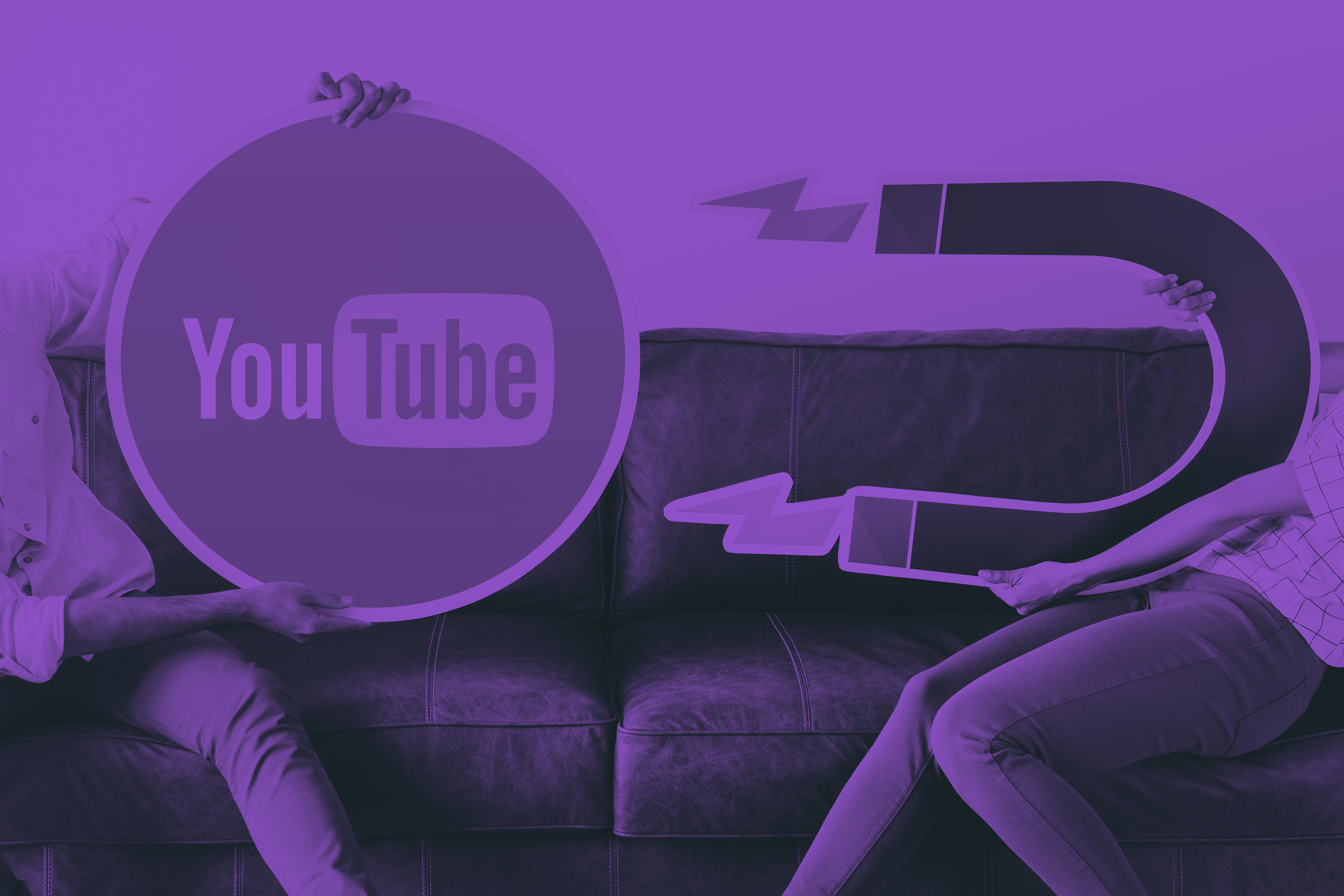Contextual targeting Google Ads: an intro
Google purchased YouTube in 2006 for over 1.5 billion. Google understood that to take YouTube to the next level and open up opportunities to further demand and revenue it needed to make YouTube part of the Google Adwords monolith advertising machine. Which back in 2006 was already turning over 10.6 billion annually.
So Google turned up the heat and rolled out:
- Contextual targeting for YouTube Ads
- Cross-pollination of data between YouTube and Google
- Centralize advertising dashboards for all Google products in Google Ads (previously Adwords)
This gave advertisers over time a lot of control over who saw the ads, on what platform, with what content, and how that affected their “advertising journey”. Not to mention simplify attribution and develop a better Pay-Per-Click model. Google pioneered contextual targeting and now added the biggest video site to its inventory.
For more than 15 years advertisers enjoyed the benefits and scope of contextual advertising with YouTube Ads and Google Ads.
What is contextual targeting in Google Ads and YouTube Ads
Contextual targeting is a method of advertising in which Google ads or YouTube Ads are placed on certain content or digital assets based on the context or subject matter of the content. The same goes for keyword targeting. Certain keywords trigger certain ad results.
This ultimately means that the ads are matched to the content based on relevant keywords or topics.
Contextual targeting is different from other types of targeting, such as demographic or behavioral targeting, which focus on targeting ads to specific audiences based on their characteristics or online behavior. Contextual targeting is based solely on search terms or specific content placements.
Some examples of contextual targeting with Google Ads or YouTube Ads:
- Targeting specific YouTube videos or content
- Showing instream YouTube ads to specific users based on searches made on Google
- Targeting a specific set of display placements triggered by a search term
Google officially removing contextual targeting options for YouTube Ads and beyond
Starting in the middle of 2022, Google notified to all their users, that will no longer support contextual targeting options for campaigns that are conversion focused for YouTube Ads, Google Ads, and Display & Video 360. This means that advertisers will no longer be able to target specific web pages or content categories with their Ads. For YouTube Ads specifically, this meant that channel placements and video keyword targeting will be sunsetted for max conversions, aka conversion-driven campaigns.
Instead, Google is shifting its focus to audience-based targetings, such as interest-based targeting and behavioral targeting with the goal of “improving performance” and making privacy accommodations for their user base.
Our expectation is that this roll-out will be applied to all campaigns irrespective of the bidding strategy.
According to Google, this change is being made in response to user privacy concerns and the increasing emphasis on data privacy regulations. By moving away from contextual targeting, Google hopes to provide a more privacy-friendly advertising experience for users while still delivering effective advertising results for advertisers.
However, this change may present challenges for some advertisers who rely heavily on contextual targeting for their conversion-focused campaigns. It may also require a shift in strategy for advertisers as they adjust to the new audience-based targeting options and alternatives to drive conversions.
Why would Google remove contextual targeting?
The short answer (According to Google) to this is: “performance” and “privacy”. Google indirectly has mentioned multiple times that as users move away from contextual advertising they will actually reap the benefits of a wider audience and also not violate privacy as contextual targeting had some grey lines such as:
- Keyword impression frequency cap
- Content promotion based on specific search criteria
- Cross-app tracking (YouTube Mobile App and Google Desktop for example)
Here at Yugo Media, we work daily to protect the interest of our clients and our take on this can be divided into two (2) main categories:
- Google has a larger revenue opportunity without contextual targeting
- It provides potential retention for larger enterprise clients as contextual targeting can limit the size of the audience.
If you would like to discuss these reasons further, please reach out and contact us further we would be excited to talk with you!
How significant is the impact on Google and YouTube Advertisers?
The impact is a hard reality check for many advertisers and will impact businesses and agencies that are running Google Ads and YouTube Ads with conversion-driven campaigns that rely on contextual targeting.
Without this option, advertisers will have to rely more heavily on audience-based targetings, such as interest-based or behavioral targeting, which may not be as effective in reaching specific audiences or may result in lower click-through rates and conversions.
Furthermore, this change may also have an impact on the (ROAS) return on ad spend, or the overall cost of advertising on Google and YouTube. Although our prediction shows this will level out, it is expected to negatively impact advertisers' overall ROI in the short term.
As more advertisers shift towards audience-based targeting, competition for those audiences may increase, which could drive up the CPA or cost per acquisition. Bearing in mind not all advertiser's campaign goals are always “leads” or “conversions”, 90% of our portfolio is and as a YouTube Ad management agency, we believe strongly that conversion-driven video campaigns will be affected and will need to be adjusted and re-structured accordingly.
Overall, while this change may benefit user privacy, data protection, regulation, and potential audience size, it may present some challenges for advertisers in terms of reaching their target audience and managing their advertising costs. Advertisers will need to adapt their strategies and potentially explore new targeting options to continue to effectively reach their audience on Google and YouTube. Continue reading to find 3 potential workarounds for moving from contextual targeting.
Will businesses that are using YouTube Ads and Google Ads, ROI drop?
Based on our analysis the answer is: Yes it will. In the short term, the ROI will drop yes. When you make any substantial targeting changes to an account it will affect the net ROI in the short term.
The potential compromises to ROI can come from multiple different sources within the account structure and targeting:
- Applying changes to the bidding strategy (shifting from “max-conversions” to “views”)
- Applying changes to the targeting strategy (shifting from search terms to
- Falses positives from erratic conversion frequency rate causing higher CPA or less consistent cost-per-acquisition.
How long will it take for performance to improve?
We expect that re-structured campaigns that are organized accordingly will take no more than 30 days to turn around and show better or the same results as contextual targeting. This is based on the account structure, bidding strategies, and targeting methods that I mention below as alternatives to contextual targeting.
What are the alternatives to contextual targeting
The alternatives to contextual targeting that you should be aware of are based on the following 3 groups plus a small variable that may not sustain in time as Google has hinted this also will be changed in due time.
- Build “Audiences” based on interest, income, and life events
This alternative can be applied to accounts that have an explicit buyer profile, specific intent, and defined interest. Loose audiences for the broad offering will result in very poor results and high CPAs. For example, if you looking for leads using an evergreen webinar with a specific offering with a defined profile, it will be a lot easier to refine an audience based on interests.
- Use “Similar to all converters” audience based on conversion data
This alternative will be applied to accounts that have sufficient historic data on specific conversion events. Be aware, that account-level conversions will profile all conversions as the same, and this may hinder your efforts if not all conversions are the same: (leads, purchases, downloads, etc). Use this alternative if you have campaign-level conversions set up specific to the campaign you will duplicate and associate with the audience. Ideal 180 days of conversion data are sufficient for the account to
- Use “Custom Segments” search terms
Using custom segments you can add “search terms” to the custom segment as signals, but have limited capacity on defining the match type, keyword exclusions, and keyword variations.
If the search term you are searching has sufficient volume (from our first experiments we recommend more than 1,000 searches monthly) you can run the instream Ad to the custom segment with the keyword.
- Adjusting bidding strategies to “views and impressions” (we do not know how long this “hack” will be available)
Moving past YouTube Ads and Google Ads contextual targeting to a potentially better future?
With the future being paved by prioritizing user privacy, here at Yugo Media we believe that removing contextual targeting could be potentially a force for good. Bearing in mind expanded audiences, reaching new segments based on behavior, conversion data, and multiple touch points.







